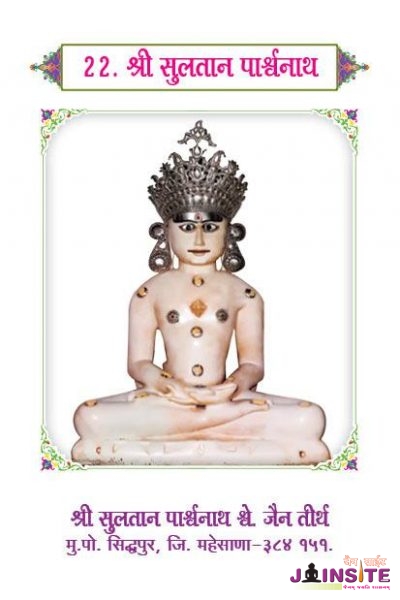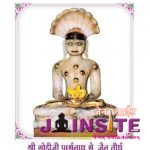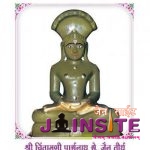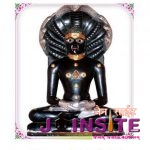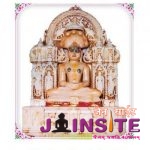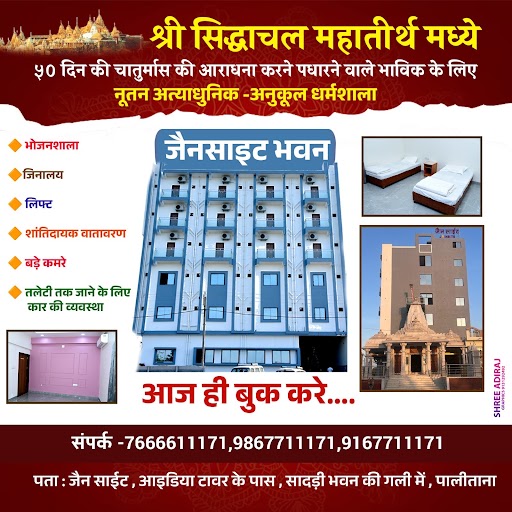Mulnayak: Nearly 63 cms. high white- coloured idol of Bhagwan Sultan Parshvanath in the Padmasana posture.
Tirth: It is in Alwa ka Chauraha in Sidhpur.
Historicity: Built on the western bank of Saraswati river, Sidhpur was known as Shristhal in ancient times. In V.S. 1184, Sidhraj Jaisingh built a beautiful temple surrounded by 24 small temples known as “Sidhvihar” (also known as “Rajvihar”). Around the same time, his Minister Alingdev built another temple “Choumukh Vihar” and installed the idol of Bhagwan Parshvanath in it. It is believed that this idol is of Sultan Parshvanath. It is said that in 16th – 17th century, there were 5 Jain temples and 190 idols of Thirthankaras in Sidhpur. The Mulnayaks of the 5 temples were Shri Neminath Bhagwan, Shri Suparshvanath Bhagwan, Shri Mahaveerswami Bhagwan, Shri Chandraprabhswami and Shri Parshvanath Bhagwan. There were Choumukhi idols (idols facing all four directions) in Parshvanath temple. This temple was in danger during the Muslim period. Alauddin Khilji entered this temple and was on the verge of destroying this idol of Parshvanath. The devotees present at that time requested Alauddin to not destroy the idol as it was not just stone but Parampita Parmeshwar was residing in this idol. Alauddin asked them to give proof of this. The devotees started singing bhajans in Deepak Raga. A miracle happened. 99 lamps filled with ghee lit by themselves and in the next instant Alauddin saw a Cobra (Dharnendra dev) sitting in front of him. Alauddin realised his mistake after seeing these miracles and said,
Other Temples: There are 2 temples here.Alauddin returned without doing any harm to the temple and since then this idol of Parshvanath is known as “Sultan Parshvanath”. This idol of Bhagwan Parshvanath is of the period of King Samprati. This idol of Sultan Parshvanath is in the first floor of Mahaveer Swami temple. This temple was renovated by the Jain Sangh in V.S. 2015.
Works of art and sculpture: Sidhpur is an ancient historic city of North Gujarat. In ancient times, it was a very famous pilgrimage centre of the Hindus known as “Matragaya”. The famous temple of Ranakpur (Trilokya Deepak Prasad or Dharna Vihar) built by Seth Dharnashah was based on this “Choumukh Vihar” temple built by Alingdev. The temples were very beautifully and artistically built.
Guidelines: Sidhpur is well connected by rail and road. The railway station of Sidhpur is at a distance of 3 kms. from the temple. Metrana tirth is at a distance of 13 kms. and Taranga tirth is at a distance of 45 kms. from Sidhpur. Dharamshala and Bhojanshala facilities are available here. There are 3 Upashrayas here.
Scripture: A mention of Sultan Parshvanath is made in “Sidhpur Chaitya Paripati”, in “Titthmala”, in “365 Shri Parshva Jin Naammala”, in “Sankheswar Parshvanath Chaand”, in “108 Naam Garbhit Shri Parshvanath Stavan”, in “Parshvanath Chaitya Paripati” etc.
Trust: Shri Sidhpur Shwetambar Jain Murtipujak Sangh, Post: Sidhpur, District: Patan, Gujarat – 384 151, India. Phone: 02767-220029, 02767-220109.
श्री सुलतान पार्श्वनाथ
श्री सुलतान पार्श्वनाथ – सिद्धपुर
मेहसाना जिले के सिद्धपुर नगर में श्री महावीर स्वामीजी के शिखरबद्ध जिनालय के ऊपर के गम्भारे में मुलनायक के रूप में श्री सुलतान पार्श्वनाथ प्रभु बिराजमान है| फने रहित पद्मासन में रही यह प्रतिमा २५ इंच ऊँची व २५ इंच चौड़ी और संप्रतिकालीन है |
सिद्ध राज जयसिंह ने सिद्धपुर में “सिद्ध विहार” नाम के भव्य-उतुंग चैत्य का निर्माण कराया था, उसी समय महामात्य अलिंगदेव ने चौमुख विहार का निर्माण कराया था| महामात्य अलिंग्देव ने इस चतुमुर्ख विहार में पार्श्वनाथ प्रभु की प्रतिष्ठा कराई थी|
मुस्लिम काल में अल्लाउदीन खिलजी ने इस मंदिर पर भी आक्रमण किया था| उस समय इस प्रतिमा को तोड़ने के लिए समुत्सुक बने अल्लाउदीन को हाथ जोड़कर भक्त भोजको ने कहा, “आप इस प्रतिमा को नष्ट न करे, यह कोई पत्थर नहीं है, साक्षात परमेश्वर है|”
भोजको की प्रार्थना सुनकर बादशाह ने प्रतिमा के परमेश्वररूप होने का प्रमाण माँगा|
भोजको ने संगीत चालु किया और उसी समय घी से भरे ९९ दीपक स्वयं प्रज्वल्लित हो गए| उसी समय एक सर्प सुलतान (बादशाह) के सामने आकर बैठ गया|
प्रतिमा के इस प्रभाव को देख बादशाह लज्जित हो गया और वह बोल उठा,”यह देव तो बादशाह सुलतान है|” इस प्रकार बोलका अल्लाउदीन वैसे ही वापस लौट गया| उस दिन से “सुलतान” का विशेषण उस प्रतिमा से जुड़ गया|

